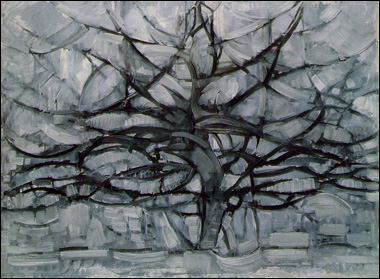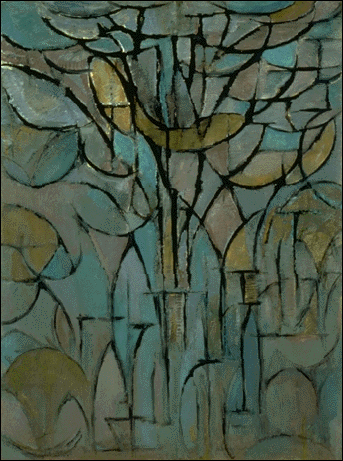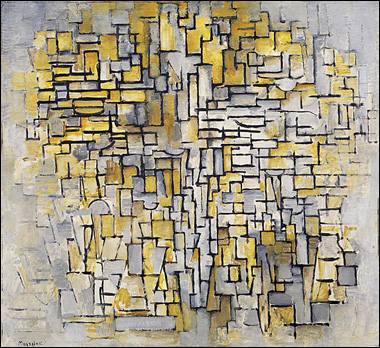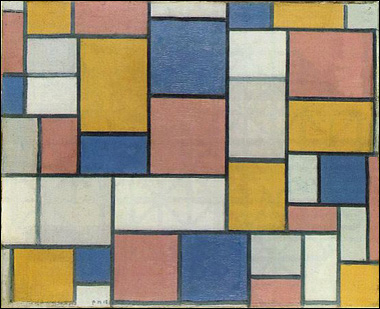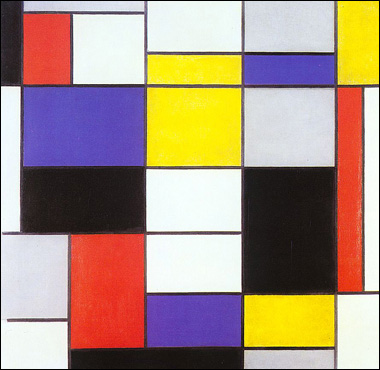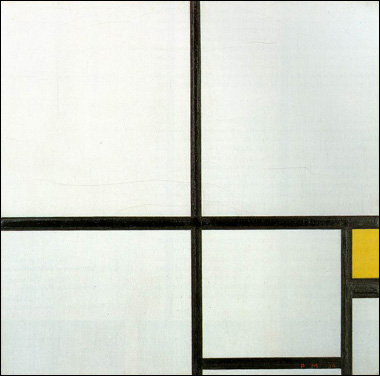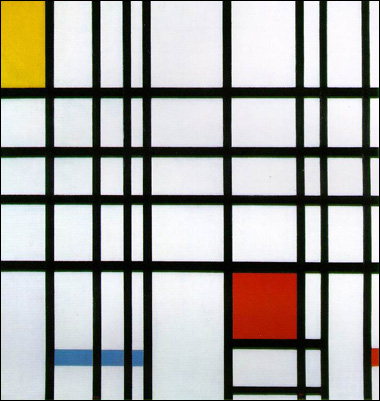Piet Mondrian was a famous abstract painter, born in the Netherlands in 1872. His most recognized works are abstract paintings of colored squares, rectangles, and thick black lines, some of which you’ll see farther down.
Of course Mondrian didn’t start out painting squares and rectangles—growing up during the tail end of Impressionism, Piet Mondrian’s first paintings were consistent with that time period, as well as the Post-impressionism of Van Gogh.
Later on he also took cues from Braque and Picasso, although he soon formed a very distinct style all his own.
In his early paintings, there are several instances of a definite Post-impressionist, emotive use of color. (Hover your mouse to see the titles, if you’d like.)
But as Mondrian explored nature his own way, he gradually began to simplify and abstract the colors and shapes that he saw.
This process of simplification and reduction would continue until he wasn’t even painting from nature at all.
The rise of Cubism also gave Mondrian a means to segment and reduce objects to their most basic forms.
Notice the brush strokes in this next painting—it’s about as expressive that way as he’d ever be.
Even so, you can see how he’s already using the strokes themselves to form horizontal rectangles and lines near the bottom of the painting.
And at this early stage of his artistic development there’s even an inkling of his future geometric abstracts in the dark black lines and almost completely non-representational images.
With additional experimentation, a sense of structure began to assert itself through his paintings.
More horizontal and vertical lines appeared, with the occasional curves and diagonals. Later on, of course, Mondrian wouldn’t have anything to do with lines that weren’t straight.
By this time, Mondrian’s work was fully non-representational, and any abstracting he’d done from nature was in the past.
He began to create all of his paintings using a grid-like format, painting squares and rectangles of mostly solid colors.
At the same time he began to shift away from neutral and intermediate colors to primary hues, especially avoiding green.
Mondrian’s most famous works are his paintings made up of pure red, yellow, and blue, as well as black and white, but for a while he used shades of gray as well, and even his lines were dark gray instead of pure black.
Over time, though, his artwork became cleaner and more simple.
Strong fields of color dominated his paintings, separated by thick black lines and sections of pure white.
Then white itself became the focus, along with a judicious use of accent colors (still primaries, however) and the same black lines to break up the space.
Mondrian then began experimenting with double and triple lines, criss-crossing his canvases with more black than ever before.
That experimentation eventually led to a major adjustment on his part—do you see anything different in the next painting?
It’s fairly subtle in that piece, actually. Mondrian painted smaller squares of color in between a few of his double lines, without any black bounding their edges.
And although it might not jump off the screen to us, unbounded color was a serious departure for Mondrian, indicating a big change of direction for him.
It actually culminated in Mondrian’s last and greatest works, which he made near the end of his life after moving to New York.
This final piece, entitled Broadway Boogie Woogie, reflected not only the bustling sights and sounds of New York City, but also one last leap forward in his evolution as an artist.
As you can see, Mondrian completely emptied his canvas of any black lines, using instead squares of pure color to separate and delineate the larger blocks of white in the painting.
It would have been interesting to see Mondrian’s style continue to evolve, especially since he’d just made such a big stylistic change—but unfortunately he died shortly after completing Broadway Boogie Woogie, in 1944.
Piet Mondrian left behind about 250 paintings, many of which are compositional masterpieces in their own right. The most fascinating thing to me about Mondrian’s work, though, is his single-minded devotion to his art.
Through the entire first half of the 20th century, while art movements came and went, Mondrian stayed true to his path, ever searching for the purest form of abstract art.
And more than any other artist perhaps, I think he found it.
This post may contain affiliate links.
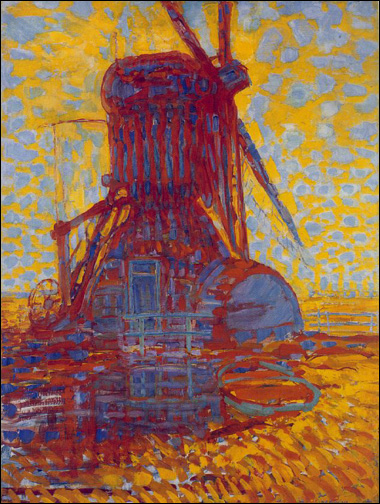
redtreebypietmondrian.jpg)
